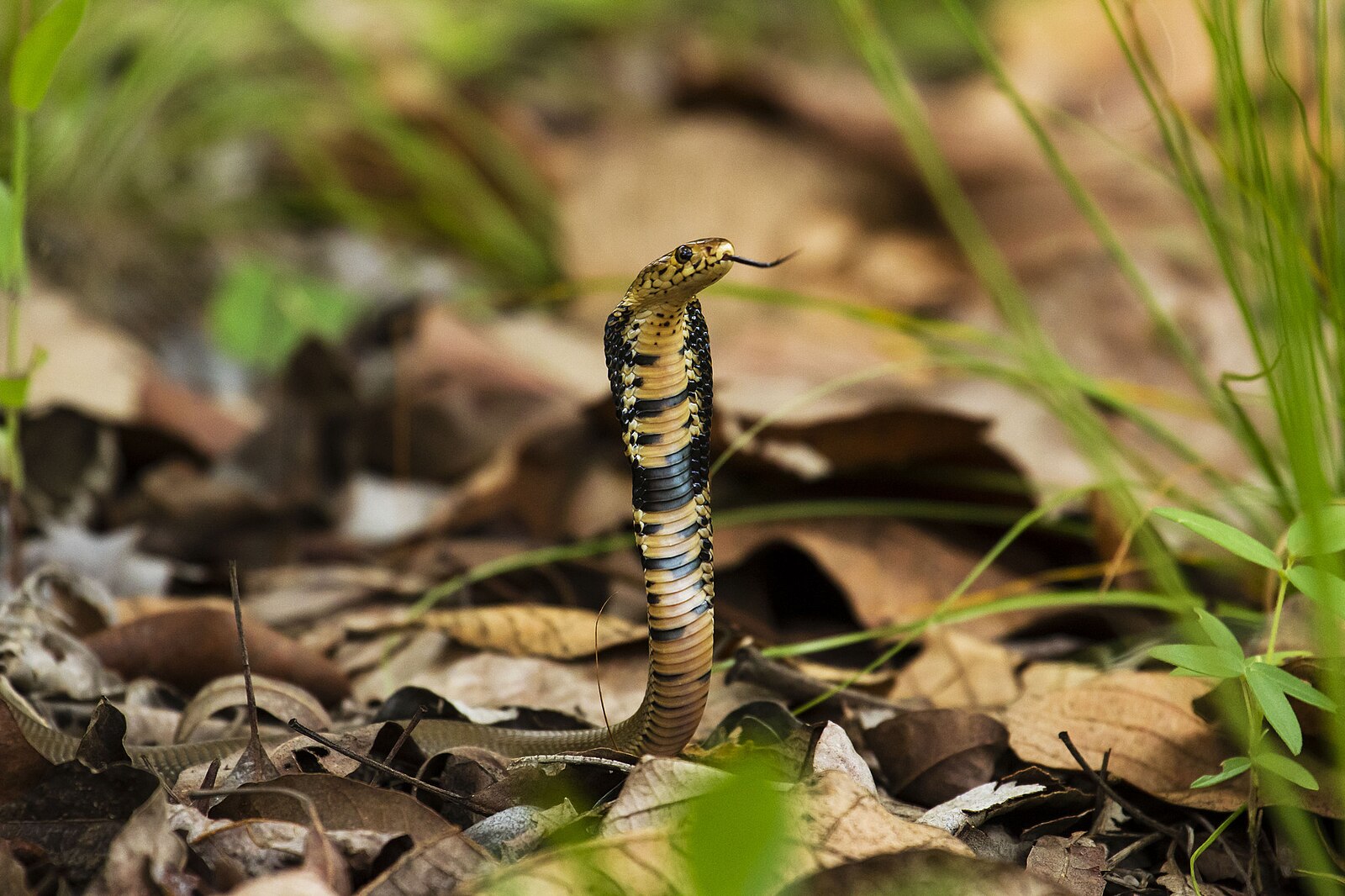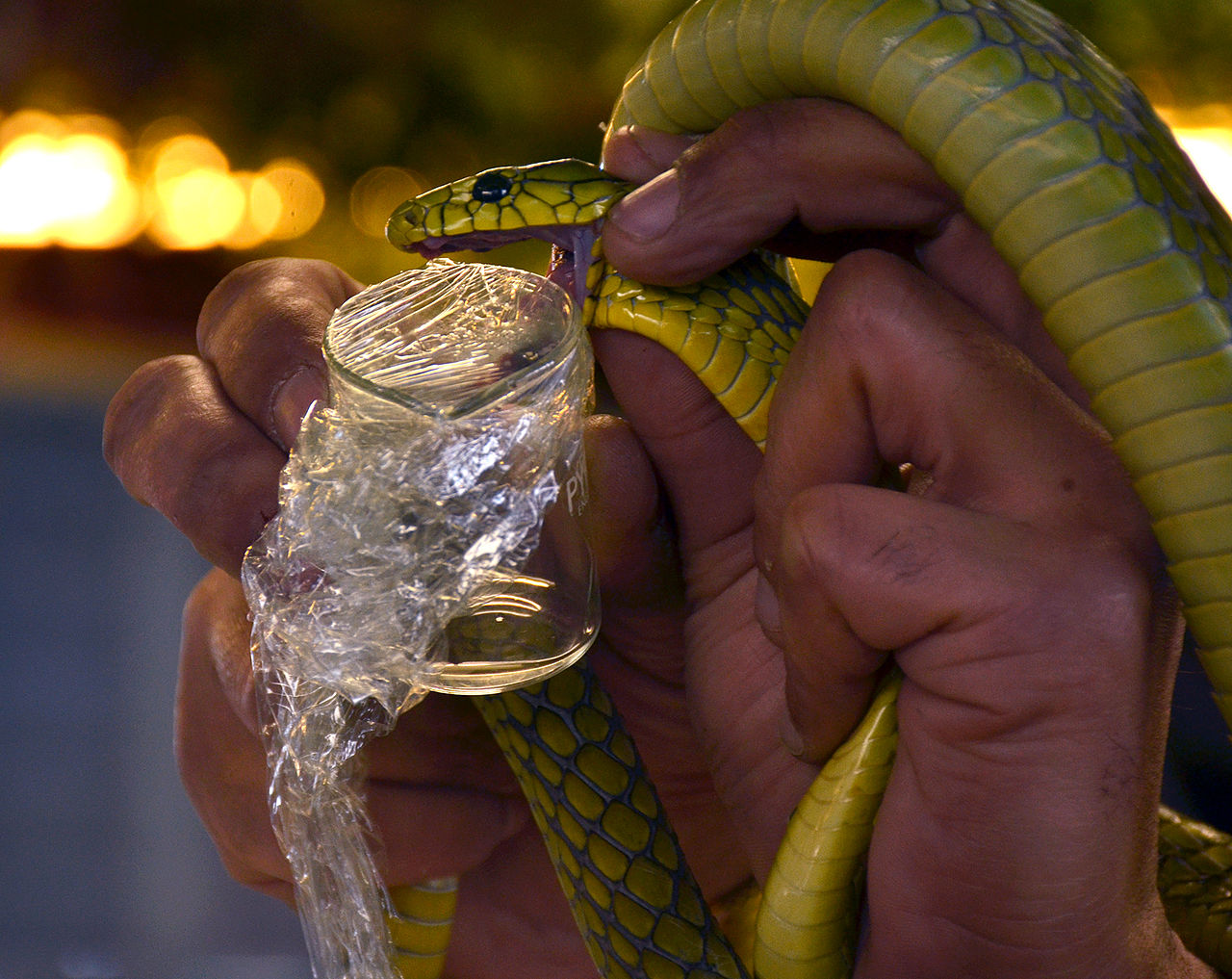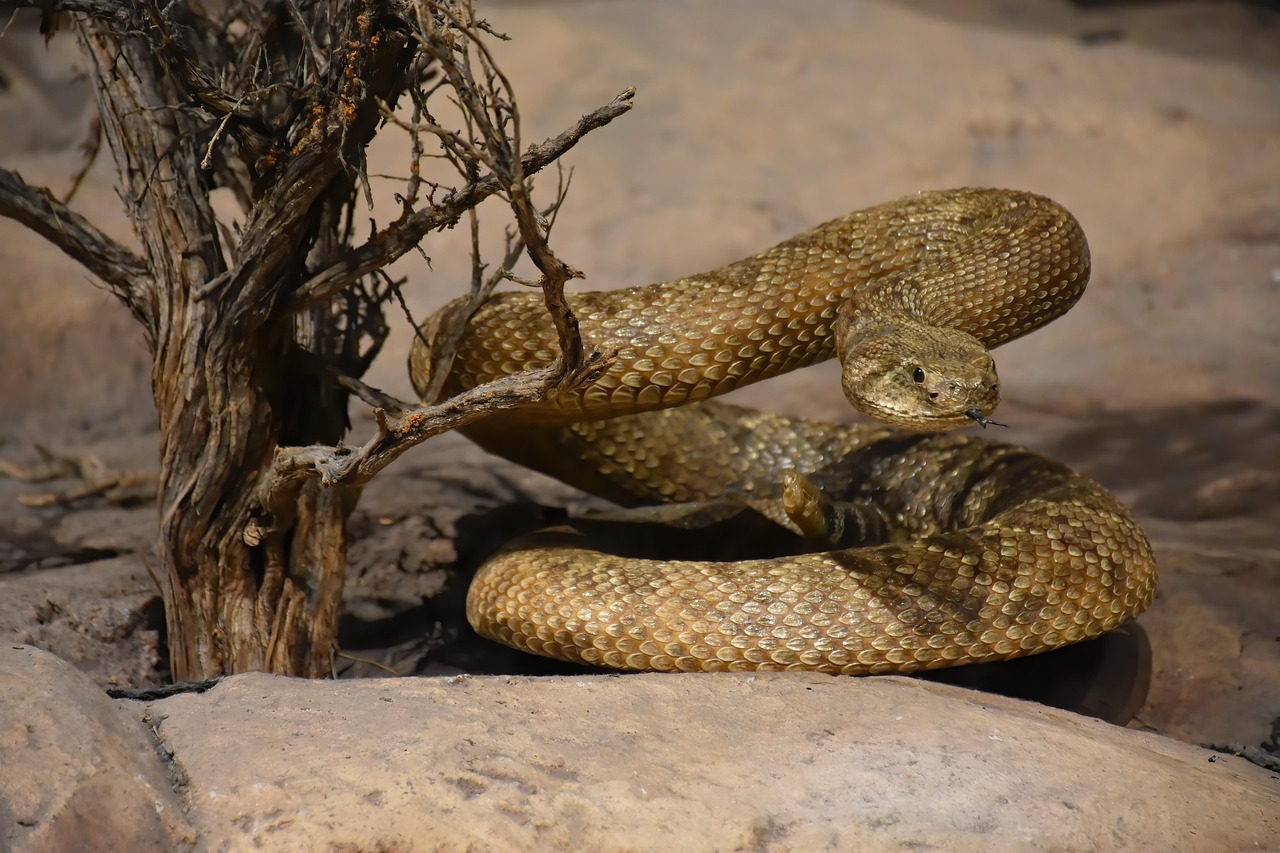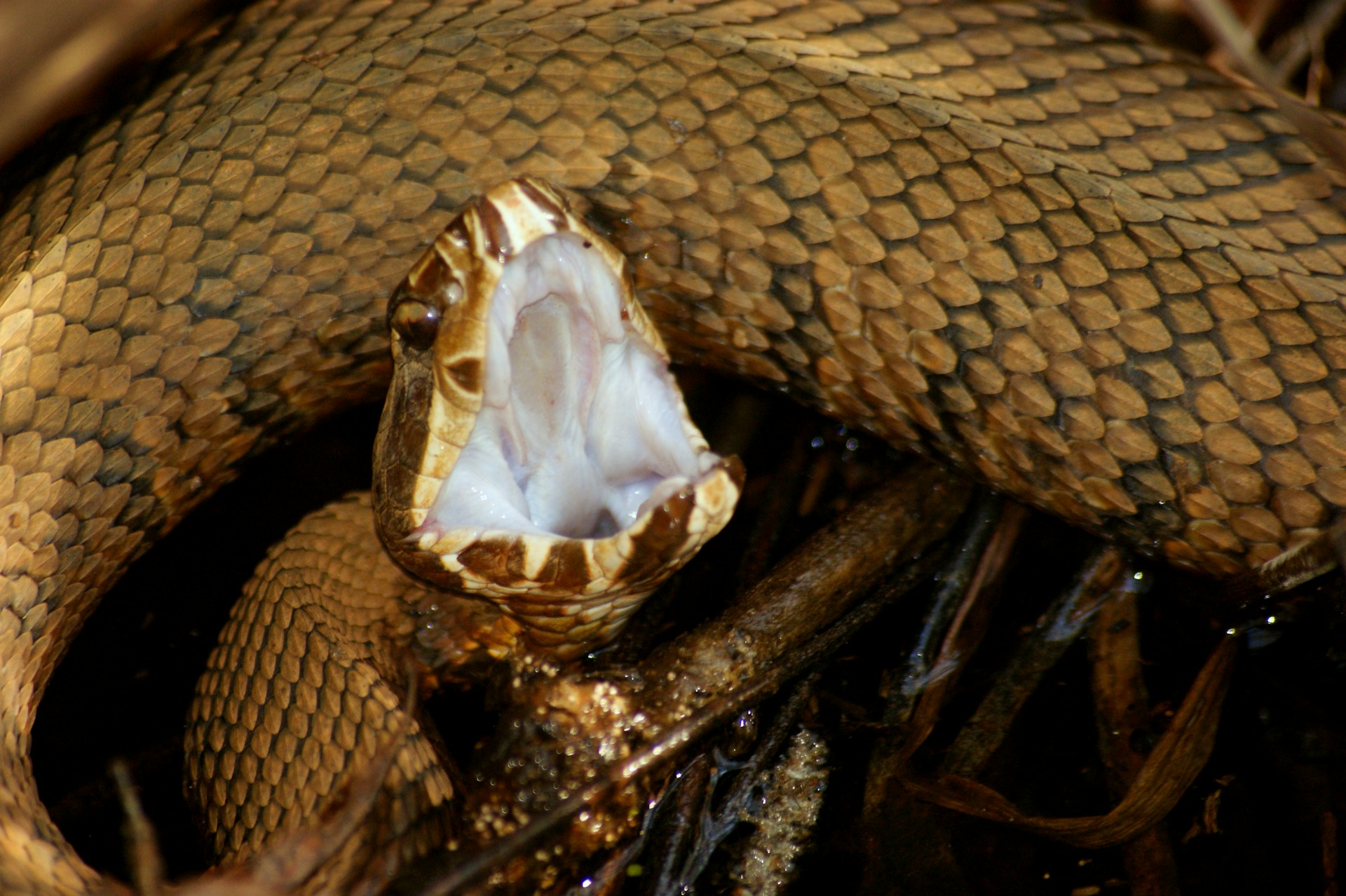In the complex world of predators and prey, venomous snakes stand as masterful hunters, perfecting their lethal techniques over millions of years of evolution. These remarkable reptiles have developed sophisticated hunting strategies that combine stealth, patience, and devastating venom delivery systems. From the lightning-fast strikes of vipers to the calculated pursuit tactics of cobras, venomous snakes employ a diverse arsenal of methods to secure their meals. This article explores the fascinating and sometimes terrifying ways these serpents detect, pursue, subdue, and consume their prey – a process that reveals nature’s deadly efficiency and the remarkable adaptations that have made venomous snakes some of the most successful predators on Earth.
The Sophisticated Sensory Systems
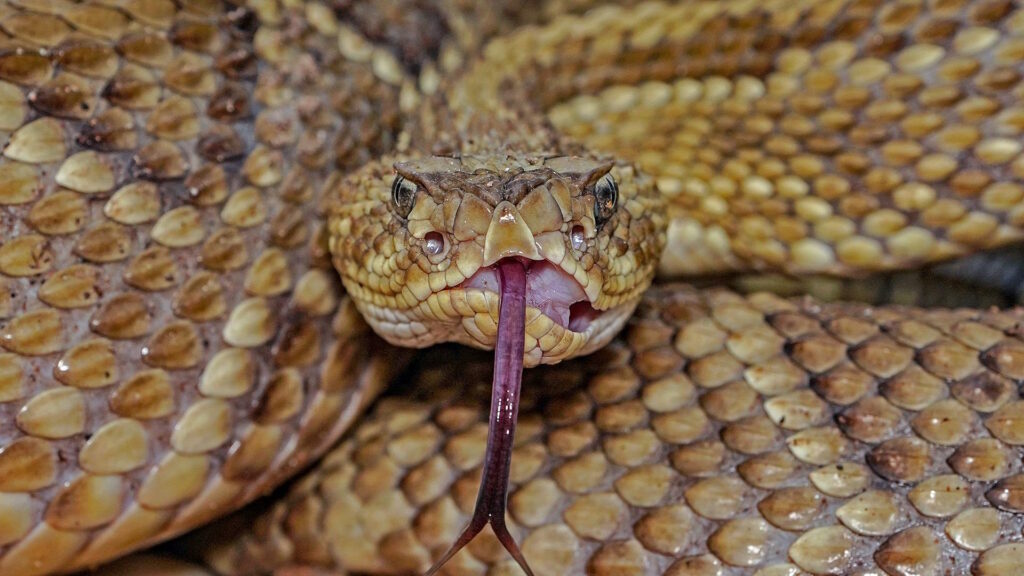
Unlike humans who rely primarily on vision, venomous snakes employ a multi-sensory approach to locate potential prey. Many species possess heat-sensing pit organs, particularly evident in pit vipers like rattlesnakes and copperheads, which allow them to detect infrared radiation emitted by warm-blooded animals. This thermal vision effectively creates a heat map of their surroundings, enabling hunting in complete darkness with remarkable precision. Additionally, snakes utilize their forked tongues to collect airborne particles, which they then analyze using their vomeronasal organ (Jacobson’s organ) in the roof of their mouth. This chemical detection system allows them to track prey trails and determine direction, freshness, and even species identification. Some species also possess exceptional vision, particularly those that hunt during daylight hours, while ground vibrations detected through their jawbones provide another dimension to their sensory arsenal.
The Ambush Strategy: Masters of Patience

Many venomous snakes, particularly vipers and certain elapids, have perfected the art of ambush hunting. These patient predators select strategic positions along game trails, near water sources, or in areas with high rodent activity, then remain motionless for hours or even days. Their cryptic patterns and coloration blend seamlessly with their surroundings, making them virtually invisible to unsuspecting prey. The gaboon viper exemplifies this strategy with its extraordinary leaf-like patterns that create perfect camouflage on the forest floor. Blood circulation adaptations allow these snakes to maintain their position without muscle fatigue, while their slow metabolism enables them to wait for extended periods between successful hunts. When prey approaches within striking range, the transformation from statue-like stillness to explosive action occurs in milliseconds – often faster than a human eye can track.
Active Hunters: The Pursuit Predators

Not all venomous snakes rely on ambush tactics; many species actively search for their meals. Mambas, cobras, and certain sea snakes exemplify this hunting style, actively prowling their territories in search of prey. These snakes typically possess more streamlined bodies and enhanced stamina compared to their ambush-hunting counterparts. King cobras, for instance, systematically investigate potential prey locations, using their elevated posture to survey the landscape and detect movement. Some species, like the black mamba, can maintain pursuit speeds of up to 12 mph over short distances, making escape difficult for potential prey. Active hunters often possess neurotoxic venoms that rapidly immobilize prey, preventing escape after the initial strike. Their hunting territories tend to be considerably larger than ambush predators, requiring greater energy expenditure but potentially resulting in more consistent feeding opportunities.
The Lightning Strike: Speed and Precision

The strike of a venomous snake represents one of nature’s most impressive displays of speed and accuracy. High-speed photography has revealed that some vipers can launch their strike at speeds exceeding 175 miles per hour, with the entire forward and retraction movement completed in less than half a second. This remarkable velocity is generated by specialized muscles that store energy like coiled springs, releasing it in a single explosive motion. The accuracy of these strikes is equally impressive, with studies showing that rattlesnakes can target and hit moving prey with precision approaching 90% in optimal conditions. Venomous snakes typically aim for vital areas that maximize venom delivery and minimize risk of prey retaliation, such as the neck or torso of mammals. The strike mechanics vary between species – some deliver a quick “hit-and-release” bite while others maintain a grip to ensure complete venom injection and track fleeing prey.
Venom Delivery Systems: Nature’s Hypodermic Needles

The fangs of venomous snakes represent remarkable biological syringes that have evolved specifically for efficient venom delivery. Vipers possess the most advanced system with long, hollow, hinged fangs that fold against the roof of the mouth when not in use and rotate forward during a strike. These specialized teeth can exceed one inch in length in larger species like the gaboon viper, allowing deep tissue penetration. Elapids (cobras, mambas, coral snakes) feature shorter, fixed front fangs that deliver venom through external grooves rather than hollow channels. Some rear-fanged venomous species have evolved modified teeth positioned further back in their mouths, requiring them to chew prey to effectively deliver venom. The musculature surrounding venom glands can generate significant pressure – up to 40 psi in some species – ensuring rapid venom ejection during the fraction of a second when fangs are embedded in prey.
Venom Composition and Prey Targeting

Snake venoms represent some of the most complex biochemical cocktails in the natural world, often containing dozens or even hundreds of different toxins and enzymes. Fascinatingly, many snake species have evolved venom compositions specifically tailored to their preferred prey. For instance, rattlesnakes that primarily feed on small mammals possess hemotoxic components that rapidly destroy blood vessels and tissues, while cobras targeting other reptiles produce neurotoxins that paralyze their prey’s nervous system. Research has revealed evidence of evolutionary “arms races” between predator and prey, where snake venom adapts to overcome prey resistance, and prey species develop biochemical defenses against specific venoms. Some snakes, like certain coral snake species, produce venoms that specifically target the unique physiology of lizards, making them exceptionally lethal to reptilian prey but less effective against mammals. This specialization demonstrates the incredible evolutionary pressures driving venom composition and hunting efficiency.
The Wait After the Strike: Tracking Envenomated Prey

Many venomous snakes, particularly vipers, employ a strategic “bite-and-release” tactic followed by systematic tracking of their envenomated prey. This hunting method minimizes the risk of injury from struggling prey while maximizing hunting efficiency. After delivering a venomous bite, these snakes will release the prey animal, which typically flees but succumbs to the venom’s effects within a short distance. The snake then uses its extraordinary chemical detection abilities to follow the scent trail of the dying animal, sometimes tracking prey over surprising distances. Studies have shown that rattlesnakes can distinguish between their own envenomated prey and other animal trails, focusing exclusively on tracking the animal they have bitten. This method conserves energy and reduces risk, as the snake only needs to approach the prey once it has been immobilized by venom effects. The waiting period varies dramatically between species and prey types, ranging from minutes for small prey items to occasionally hours for larger mammals.
Prey Consumption: The Remarkable Feeding Mechanism

After successfully subduing prey, venomous snakes face the challenge of consuming animals that often exceed their own head diameter. This remarkable feat is accomplished through a series of specialized adaptations of the snake’s skull and jaw. Unlike human jaws, which are fused at the symphysis, snakes possess multiple points of articulation in their skulls, including a highly mobile jaw connection that allows extraordinary expansion. The mandibles (lower jawbones) are connected by elastic ligaments rather than rigid bone, enabling them to spread widely during feeding. Additionally, snakes can move the left and right sides of their jaws independently in an alternating “walking” motion that gradually pulls prey into their digestive tract. Their backwards-curved teeth function like conveyor belts, preventing prey from escaping once swallowing begins. This complex feeding mechanism allows even modestly-sized venomous snakes to consume prey items that can weigh 50-100% of their own body mass.
Juvenile Hunting Strategies and Adaptations

Young venomous snakes face unique challenges in securing prey, often leading to specialized hunting behaviors that differ from their adult counterparts. Many juvenile pit vipers possess brightly colored tail tips that they wiggle to mimic worms or insect larvae, effectively creating a lure to attract smaller prey items like frogs or lizards within striking range. Studies have shown that juvenile rattlesnakes often possess venom with different compositions than adults, typically containing higher concentrations of neurotoxins that rapidly immobilize the smaller prey they target. Young cobras and mambas frequently hunt during daylight hours, unlike adults who may be more crepuscular, potentially reducing competition with larger conspecifics. Despite their smaller size, research has demonstrated that juvenile venomous snakes often possess proportionally larger venom glands relative to their body size, ensuring they can deliver sufficient venom to subdue prey during their vulnerable growth stages.
Aquatic Hunting Specializations

Venomous sea snakes and certain freshwater species have evolved specialized hunting adaptations for their aquatic environments. Most notably, sea snakes possess paddle-shaped tails that provide efficient propulsion through water, allowing them to pursue fish with remarkable agility. Their nostrils feature specialized valves that close underwater, and some species can remain submerged for over two hours while hunting. Many aquatic venomous snakes have developed sensory adaptations to detect water pressure changes created by moving fish, essentially “feeling” their prey’s movement through the water column. Their venom composition typically features fast-acting neurotoxins that rapidly immobilize fish, preventing escape in the three-dimensional aquatic environment. Interestingly, some sea snakes have been observed hunting cooperatively with certain fish species, forming temporary alliances where the fish flush prey from coral crevices while the snakes block escape routes – a rare example of cooperative hunting involving reptiles.
Seasonal and Environmental Influences on Hunting

Venomous snake hunting behaviors demonstrate remarkable plasticity in response to seasonal and environmental factors. During colder months, many temperate species significantly reduce their hunting activity, sometimes fasting for extended periods while relying on fat reserves. Conversely, mating seasons often trigger increased hunting frequency to support the energetic demands of reproduction, particularly in females who must nourish developing embryos. Rainfall patterns dramatically influence hunting behavior in many species, with increased activity often observed following precipitation events that trigger prey movement. Research in the American Southwest has documented rattlesnakes positioning themselves strategically near rodent burrows before summer monsoon rains, anticipating the emergence of prey. Some desert-dwelling venomous species shift their hunting patterns seasonally, becoming nocturnal hunters during hot summer months while adopting daylight hunting during milder seasons to maximize thermal efficiency.
Evolutionary Arms Race: Prey Adaptations and Snake Countermeasures

The predator-prey relationship between venomous snakes and their food sources represents a classic evolutionary arms race spanning millions of years. Many rodent species have developed behavioral adaptations to detect and avoid snakes, including specialized snake-recognition neural circuits that trigger immediate evasive responses. Some mammals, particularly certain squirrel species, have evolved remarkable biochemical resistance to snake venoms through modified receptor proteins that prevent toxin binding. In response, snakes continually evolve more potent or modified venoms to overcome these defenses. California ground squirrels famously engage in a behavior called “tail flagging” when confronting rattlesnakes, which signals detection of the predator while simultaneously dissipating body heat to reduce their infrared signature against pit viper sensing. The evolutionary pressure from this ongoing biological arms race has driven the development of increasingly sophisticated hunting strategies and more complex venom compositions in snakes worldwide.
Human Observations and Scientific Research

Scientific understanding of venomous snake hunting behavior has advanced significantly through technological innovations that allow non-invasive observation of these secretive predators. Radio telemetry has revealed previously unknown hunting patterns by tracking snake movements continuously over extended periods, documenting hunting ranges far larger than previously suspected for many species. Thermal imaging cameras now permit researchers to observe nighttime hunting behaviors without disturbing natural patterns with artificial lighting. High-speed videography capturing thousands of frames per second has revolutionized our understanding of strike mechanics, revealing strike speeds and precision far exceeding earlier estimates. Laboratory studies using controlled environments with transparent barriers have allowed detailed analysis of prey detection mechanisms and strike targeting. These research advances not only enhance our understanding of snake ecology but also contribute to medical research on venom properties and potential pharmaceutical applications derived from these biochemical cocktails.
In conclusion, venomous snakes represent the culmination of millions of years of evolutionary refinement as predators. Their hunting strategies showcase remarkable adaptations that efficiently solve the fundamental challenges faced by all predators: detecting, capturing, subduing, and consuming prey while minimizing personal risk. From sophisticated sensory systems that detect prey through multiple channels to lightning-fast strikes and biochemically complex venoms tailored to specific prey types, these reptiles have perfected predation through specialization. Understanding these hunting dynamics provides valuable insights into ecosystem function, evolutionary processes, and the delicate balance between predator and prey that shapes natural communities worldwide. As research techniques continue to advance, we can expect even more fascinating discoveries about the hunting behaviors of these formidable and often misunderstood predators.

